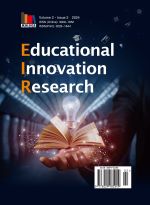Adaptation of Dance Performance Forms to Evolving Environments
Keywords:
Dance performance forms, Digital technology, Virtual reality, Multicultural integration, Environmental adaptation, Dance innovationAbstract
This study explores how dance performance forms adapt to changing environments, focusing on digital technology, multicultural integration in the process of globalization, and the impact of changes in the social environment on dance performance. By analyzing the application of technologies such as virtual reality (VR), augmented reality (AR), and mixed reality (MR) in dance, the study reveals how these technologies provide new creative spaces and expression techniques for dance performances. At the same time, this article also deeply explores the multicultural integration of dance performance forms in the context of globalization and analyzes how dancers and choreographers balance traditional culture and modern innovation in creation. In addition, research also explores the environmental adaptation of dance in specific cultural contexts, including responses to ecological awareness, social crises, and cultural inheritance. Through these studies, this paper proposes a development strategy for dance performance forms in the context of the new era, providing theoretical and practical guidance for future dance creation and practice.
References
Li X, 2015, Application Status and Design Requirements of Virtual Reality Technology in Dance Teaching. Theater Journal, 2015(22): 191.
Sheng J, 2023, Artificial Intelligence and Dance Creation. Tomorrow’s Style, 2023(12): 138.
Tian Y, 2018, Strategies for Applying Virtual Reality Technology in Dance Teaching. Education Modernization, 5(34): 360–361.
Chen L, 2018, Research on the Application of Virtual Reality Technology in Dance Teaching. Tomorrow’s Style, 2018(12): 138.
Zeng H, 2023, Interdisciplinary Integration in Dance Creation through Cross-Cultural Communication. Shang Wu, 2023(16): 159–161.
Bu Y, Zhao H, 2018, Application of Virtual Reality Technology in Dance Teaching. Commercial Stories, 2018(5): 122.
Zhang Q, 2016, Research on Virtual Reality Technology in Dance Teaching. Tomorrow’s Style, 2016(15): 311.
Duan F, 2022, Dance Performance Research. Culture and Arts Press, Beijing.
Lu T, Xiao Y, 2023, Strategies for Integrating Multicultural Education into Dance Education. Shang Wu, 2023(16): 159–161.
Zhang H, 2022, Automatic Generation of Dance Movements using AI. Automation Technology and Application, 41(4): 82–85.
Zhang H, 2019, Fusion of Traditional and Modern Elements in Dance. Dance and Society, 2019(23): 45–57.
Jordanous A, Keller B, 2016, Modelling Creativity: Identifying Key Components through a Corpus-based Approach. PLOS One, 11(10): e0162959. https://doi.org/10.1371/journal.pone.0162959
Li Z, 2021, Creativity and Opportunity: How COVID-19 Fosters Digital Dance Education. Digital Creativity, 32(3): 188–207.
Schneider V, Rohmann A, 2021, Arts in Education: A Systematic Review of Competency Outcomes in Quasi-experimental and Experimental Studies. Frontiers in Psychology, 2021(12): 623935. https://doi.org/10.3389/fpsyg.2021.623935
O’Hagan A, Borowiecki KJ, 2021, The Digital Transformation of Live Arts and Cultural Performance: Opportunities, Challenges, and the Impact of COVID-19. Cultural Trends, 30(1): 3–27. https://doi.org/10.1080/09548963.2021.1884453
Sanders CD, 2021, An Exploration into Digital Technology and Applications for the Expansion of 21st-century Dance Academia and Training, thesis, University of California.

